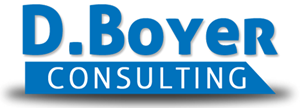Business is mostly conducted via email or phone communications.
Office hours 10:00 a.m. to 6:00 p.m, Mon. - Thurs., and 10:00 a.m. to 2:00 p.m. on Fridays.
SEND EMAIL INQUIRIES DIRECTLY TO:
Dawn.Boyer@me.com
Business is mostly conducted via email or phone communications.
Office hours 10:00 a.m. to 6:00 p.m, Mon. - Thurs., and 10:00 a.m. to 2:00 p.m. on Fridays.
SEND EMAIL INQUIRIES DIRECTLY TO:
Dawn.Boyer@me.com
Business is mostly conducted via email or phone communications.
Office hours 10:00 a.m. to 6:00 p.m, Mon. - Thurs., and 10:00 a.m. to 2:00 p.m. on Fridays.
SEND EMAIL INQUIRIES DIRECTLY TO:
Dawn.Boyer@me.com
Business Plan Template
October 20th, 2011 by Dawn Boyer
Need to write a business plan? Don’t know where to start?
Here’s a handy-dandy template to get your brain juices flowing:
- Executive Summary – overall description of the company, it’s strategic goals, background, and start dates, owner(s), evolution of the idea that got it started, etc. (1-1.5 pages)
- Objectives –
- Short-Term Goals and Objectives – first year, second to third year, fifth year
- Long-Term Goals and Objectives – five to ten years
- Mission – what is the overall company’s mission to accomplish? For customers, for investors, and for owners.
- Keys to Past, Current, and Future Success:
- Awards / Recognition
- Unique position within the marketplace
- Equipment or special knowledge
- Education, training, background (hands-on experience)
- Support System(s) of skilled vendors or personnel
- Company Summary – what the company provides to customers (services/products)
- Primary income / revenue producer
- Secondary income / revenue producer
- Tertiary income / revenue producer
- Company Ownership –
- Owners – resume, bio, qualifications statement
- who owns the company, how much ‘investment’ has been poured personally into the company’s establishment to date, what sacrifices has the owner completed to get to where the company is today
- Operations Summary – List of assets, equipment, (long-term investments in equipment [e.g., large truck, warehouse, etc.] and short-term investments in equipment [e.g., computers], and professional services for research and development, reputable vendors for provision of professional services for organizational support)
- Service Business Analysis
- Explain the Niche Market –
- What parallel businesses are doing similar but not same service/product
- Competition –
- Who is the competition or potential competition? Primary and secondary competitors?
- What is this company doing to avoid the competition from coming into the market and stealing the idea or duplicate this company’s services?
- This company’s ‘competitive edge’ is (what?):
10. Branding – Marketing, Business & Development (research completed/media in place)
- When?
- How?
- When?
- Where?
- Where?
11. Market Segmentation – Primary Customers (research completed)
- where they are (geographic area) / where they will purchase from (or via)
- describe customer’s demographic makeup (average annual income, average time spent in an ‘activity’ (your services), access to computer/Internet, etc.)
- reason the customers will ‘buy’ from your unique service / buying patterns
- economic reasons these customers will purchase
12. Target Market Segmentation Strategy for Marketing
- Primary market and media for initial advertising
- Secondary markets & media for advertising – primary & secondary customers
13. Services –
- Primary/Core services provided to customers outlined and described here
- Secondary services provided as Point of Purchase, additional services, etc.
- Tertiary services – such as ‘sold advertising’ on the website, etc.
- Affiliate services –
14. Prices for Services – (not detailed but general)
- Primary/Core services – explain pricing, profit ratio, loss leaders, outlier service prices
- Secondary services – explain pricing, profit ratio, loss leaders, outlier service prices
- Tertiary services – explain pricing, profit ratio, loss leaders, outlier service prices
15. Management – Personnel Plan:
- Primary (owner)
- Secondary Staff – administration personnel
- Support Staff
- Service Vendors (payroll, legal, bank, etc.)
16. APPENDIX:
- Customers (current)
- Website (hosting services, guarantees, warranties, analytics for website)
- Research – Polls, Panels, quantitative and qualitative research and analytics
- Pricing Catalog – all goods and services sold, primary, secondary, and tertiary goods and services.
- Reference information
Readers Comments
Business Plan Template
October 20th, 2011 by Dawn Boyer
Need to write a business plan? Don’t know where to start?
Here’s a handy-dandy template to get your brain juices flowing:
- Executive Summary – overall description of the company, it’s strategic goals, background, and start dates, owner(s), evolution of the idea that got it started, etc. (1-1.5 pages)
- Objectives –
- Short-Term Goals and Objectives – first year, second to third year, fifth year
- Long-Term Goals and Objectives – five to ten years
- Mission – what is the overall company’s mission to accomplish? For customers, for investors, and for owners.
- Keys to Past, Current, and Future Success:
- Awards / Recognition
- Unique position within the marketplace
- Equipment or special knowledge
- Education, training, background (hands-on experience)
- Support System(s) of skilled vendors or personnel
- Company Summary – what the company provides to customers (services/products)
- Primary income / revenue producer
- Secondary income / revenue producer
- Tertiary income / revenue producer
- Company Ownership –
- Owners – resume, bio, qualifications statement
- who owns the company, how much ‘investment’ has been poured personally into the company’s establishment to date, what sacrifices has the owner completed to get to where the company is today
- Operations Summary – List of assets, equipment, (long-term investments in equipment [e.g., large truck, warehouse, etc.] and short-term investments in equipment [e.g., computers], and professional services for research and development, reputable vendors for provision of professional services for organizational support)
- Service Business Analysis
- Explain the Niche Market –
- What parallel businesses are doing similar but not same service/product
- Competition –
- Who is the competition or potential competition? Primary and secondary competitors?
- What is this company doing to avoid the competition from coming into the market and stealing the idea or duplicate this company’s services?
- This company’s ‘competitive edge’ is (what?):
10. Branding – Marketing, Business & Development (research completed/media in place)
- When?
- How?
- When?
- Where?
- Where?
11. Market Segmentation – Primary Customers (research completed)
- where they are (geographic area) / where they will purchase from (or via)
- describe customer’s demographic makeup (average annual income, average time spent in an ‘activity’ (your services), access to computer/Internet, etc.)
- reason the customers will ‘buy’ from your unique service / buying patterns
- economic reasons these customers will purchase
12. Target Market Segmentation Strategy for Marketing
- Primary market and media for initial advertising
- Secondary markets & media for advertising – primary & secondary customers
13. Services –
- Primary/Core services provided to customers outlined and described here
- Secondary services provided as Point of Purchase, additional services, etc.
- Tertiary services – such as ‘sold advertising’ on the website, etc.
- Affiliate services –
14. Prices for Services – (not detailed but general)
- Primary/Core services – explain pricing, profit ratio, loss leaders, outlier service prices
- Secondary services – explain pricing, profit ratio, loss leaders, outlier service prices
- Tertiary services – explain pricing, profit ratio, loss leaders, outlier service prices
15. Management – Personnel Plan:
- Primary (owner)
- Secondary Staff – administration personnel
- Support Staff
- Service Vendors (payroll, legal, bank, etc.)
16. APPENDIX:
- Customers (current)
- Website (hosting services, guarantees, warranties, analytics for website)
- Research – Polls, Panels, quantitative and qualitative research and analytics
- Pricing Catalog – all goods and services sold, primary, secondary, and tertiary goods and services.
- Reference information










